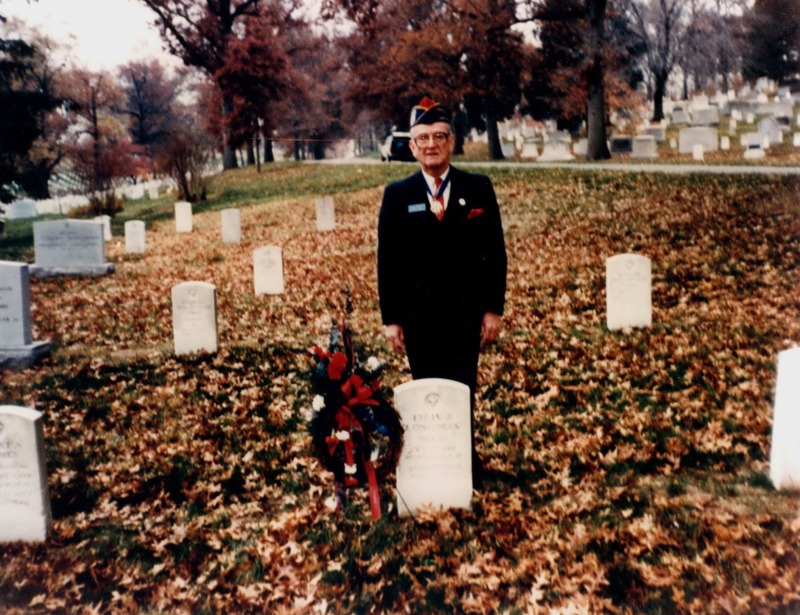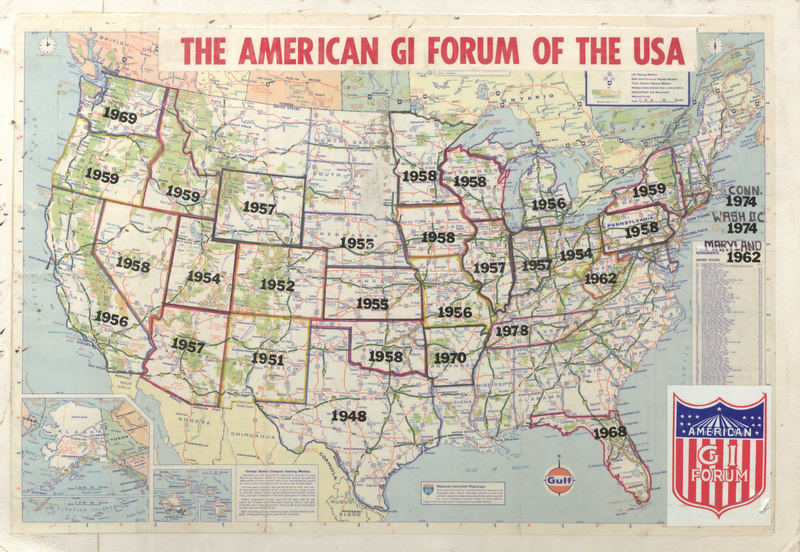Soldier
Military service shaped Dr. Garcia’s life and activism. When he returned to the United States after serving overseas during World War II, he joined the League of United Latin American Citizens (LULAC). The organization addressed issues of discrimination but did not, Dr. Garcia believed, do enough for veterans. In 1948, he founded the American GI Forum (AGIF). The veterans’ advocacy group soon evolved into a powerful and effective force for civil rights as men and women established chapters nationwide.
Serving in the Military
Dr. Garcia’s military service began at an early age. At 15, he joined the Civilian Military Training Corps (CMTC). He entered active duty in 1942 and served with the U.S. Army Medical Corps in Europe and North Africa during World War II. Dr. Garcia received several commendations for outstanding service, including one citation that praised his devotion to duty and “desire to do more than his share.”
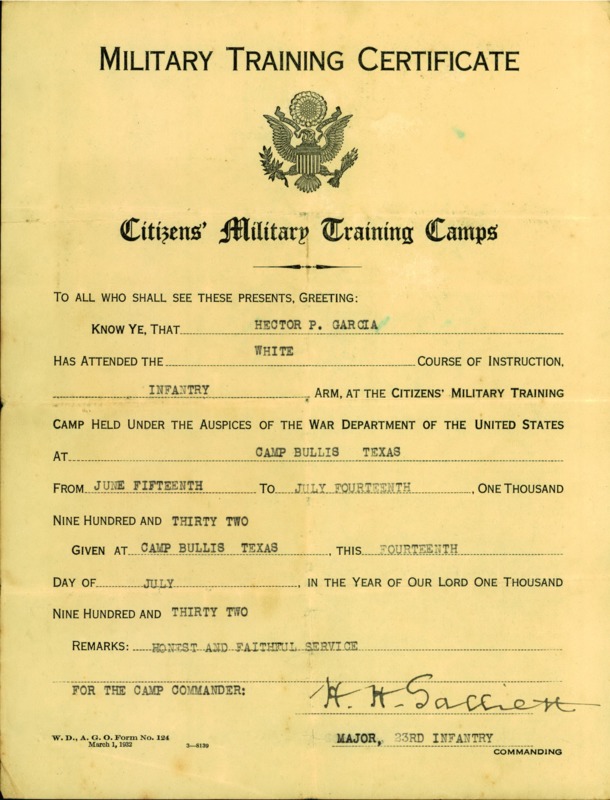
Military Training Certificate, Citizens' Military Training Camps
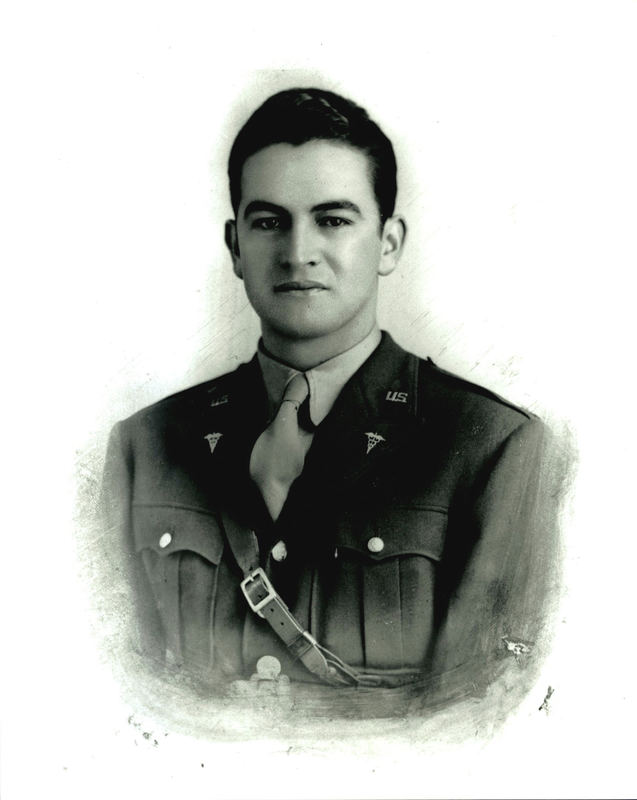
Dr. Hector P. Garcia Military Portrait
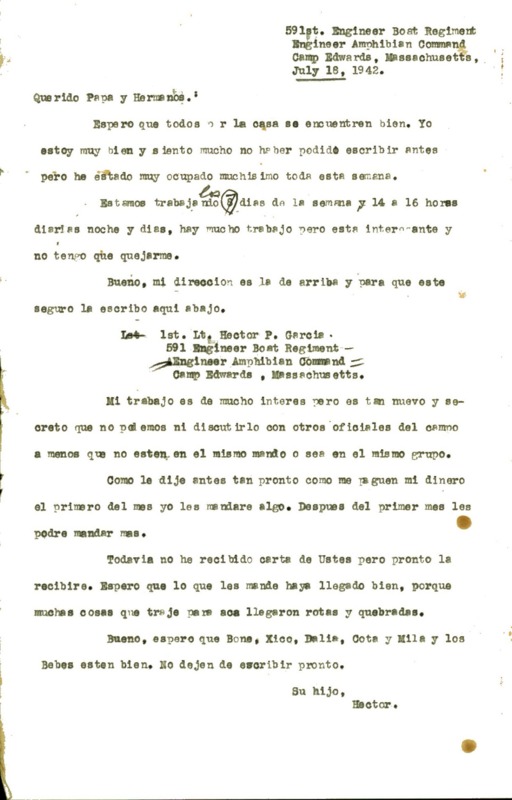
Letter from Dr. Hector P. Garcia to Jose Garcia

Dr. Hector P. Garcia during World War II
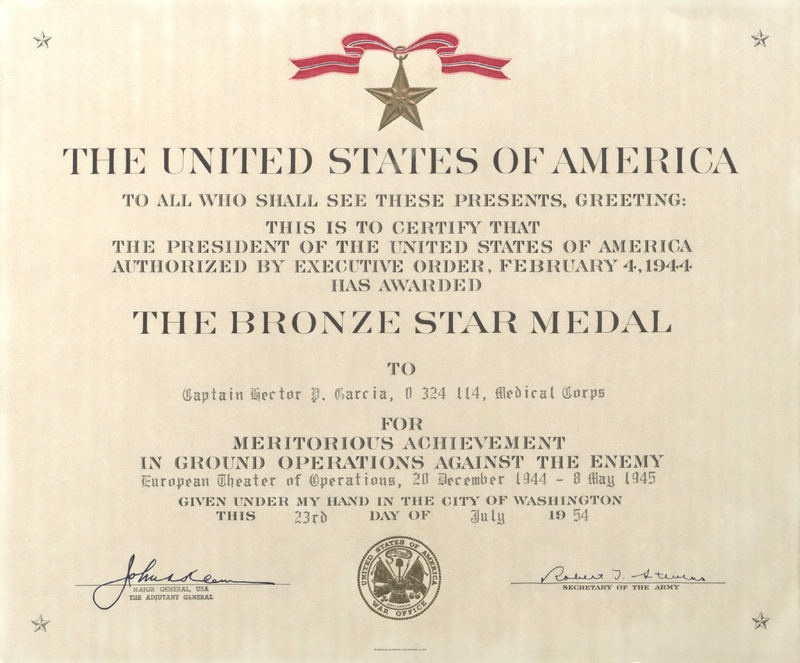
The Bronze Star Medal
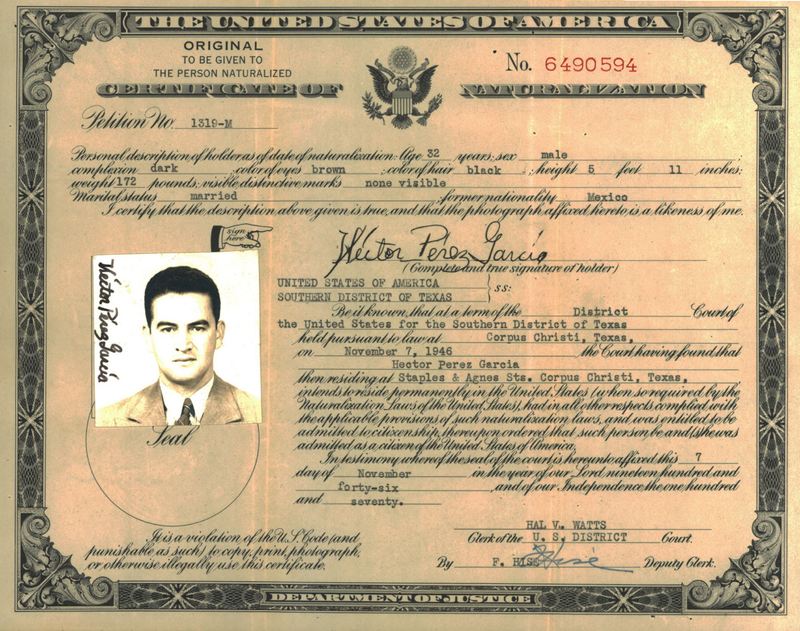
Certificate of Naturalization

AGIF Convention, Los Angeles
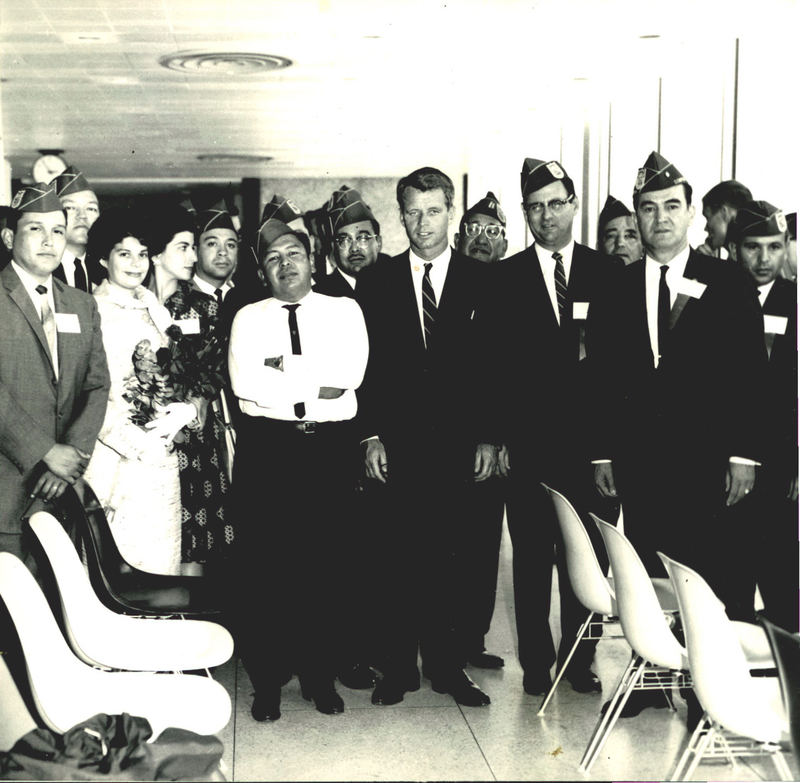
Robert F. Kennedy at AGIF Convention, Chicago
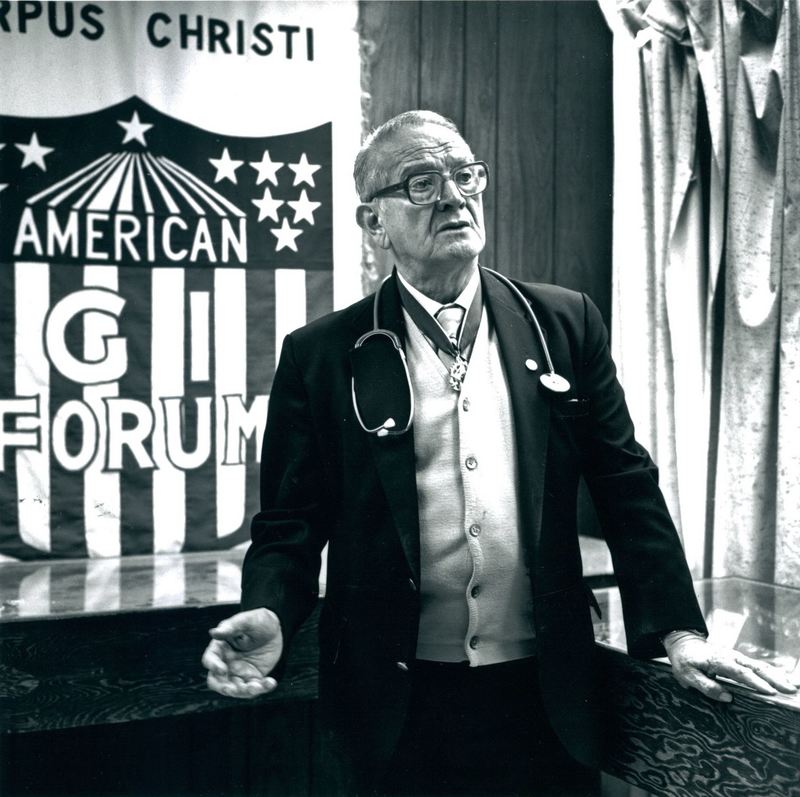
Dr. Hector P. Garcia Portrait
Founding the American GI Forum
Despite their wartime service and sacrifices, Mexican American veterans encountered racism, discrimination, and poverty when they returned to the United States. In response, Dr. Garcia convened a meeting in 1948 for veterans in Corpus Christi. Hundreds gathered and decided to establish a veterans’ rights organization, the AGIF. With Dr. Garcia as its president, the AGIF flourished and spread nationwide.
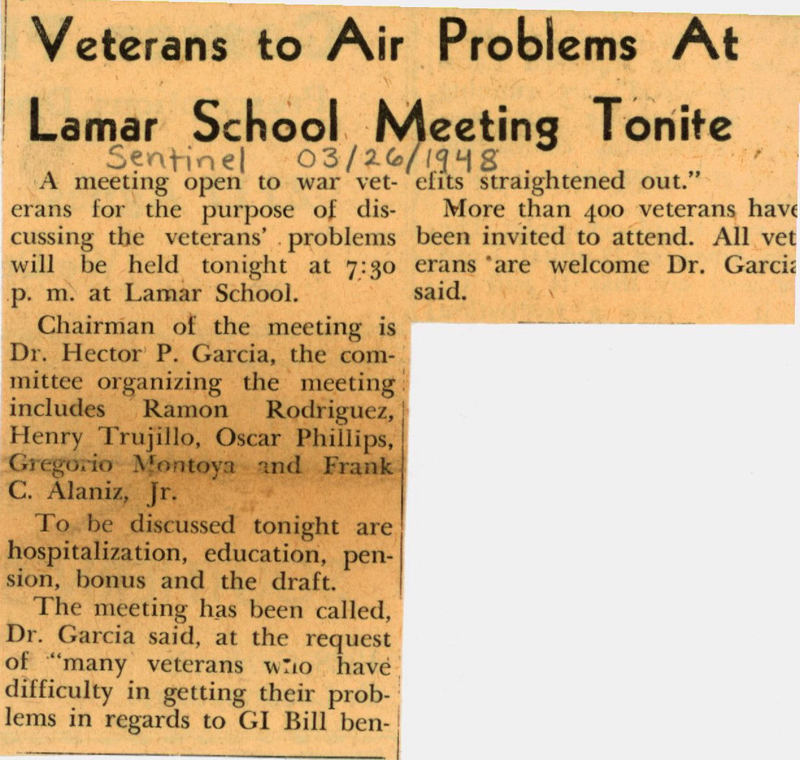
Veterans to Air Problems at Lamar School Meeting Tonite
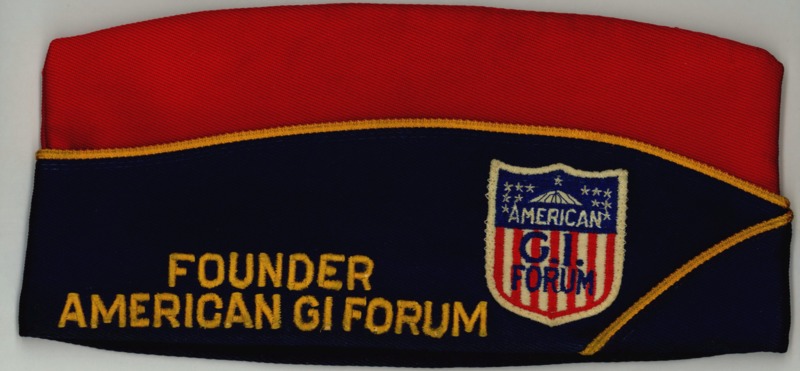
Dr. Hector P. Garcia's American GI Forum Founder Hat
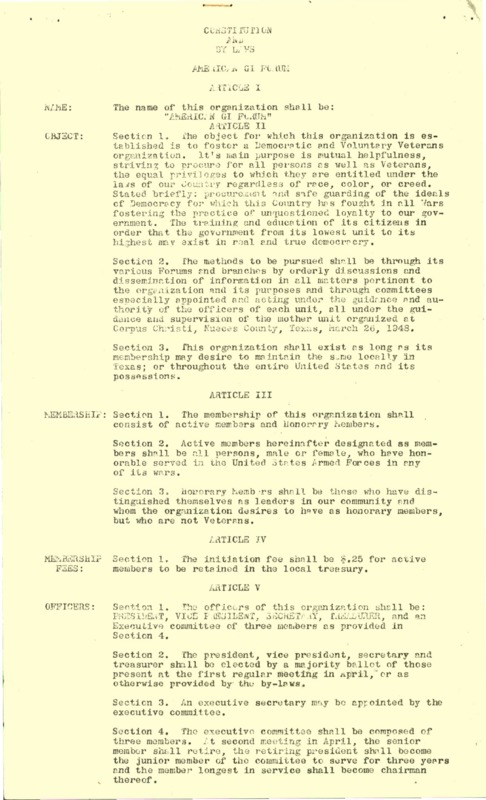
Constitution and By Laws, American GI Forum
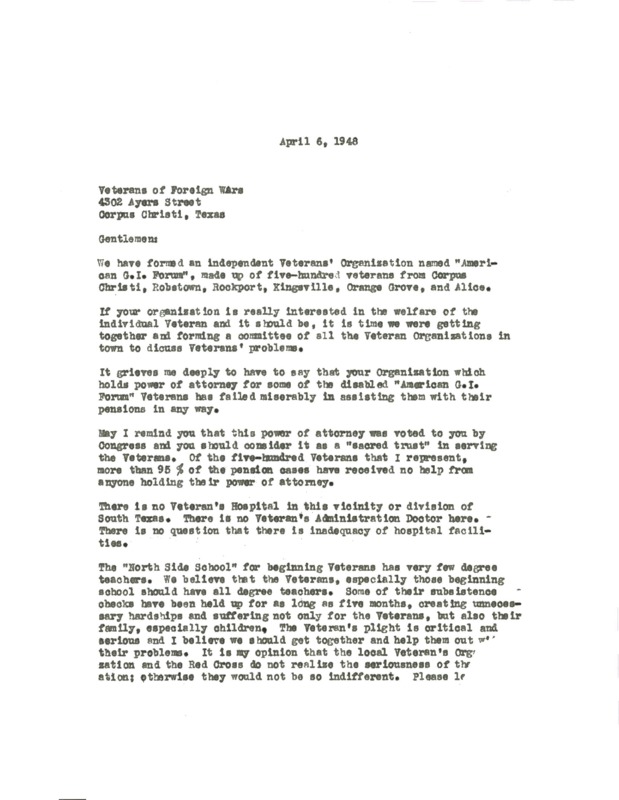
Letter from Dr. Hector P. Garcia to the Veterans of Foreign Wars
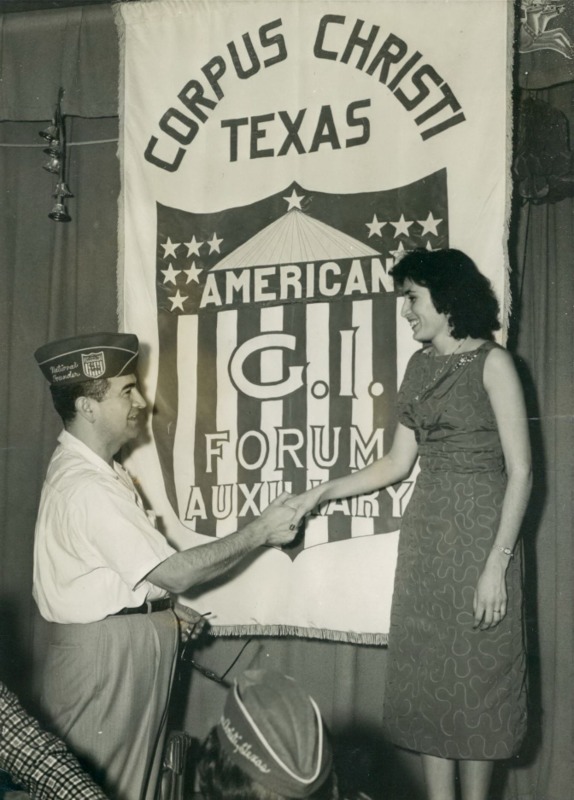
Dr. Hector P. Garcia with AGIF Auxiliary Member Claudina Garza

The Mexican American Experience Radio Program

The American GI Forum's 43rd National Convention
Supporting Soldiers and Veterans
Dr. Garcia’s commitment to America’s soldiers and veterans never wavered. He became a personal advocate for thousands of soldiers, providing medical care, arranging funeral services, and supporting the families of the fallen. Throughout the Vietnam War he also made an effort to greet returning coffins at the Corpus Christi airport, firm in his belief that “It is the least I can do for them.”

Letter from Dr. Hector P. Garcia to Frank McGee, Corpus Christi Draft Board
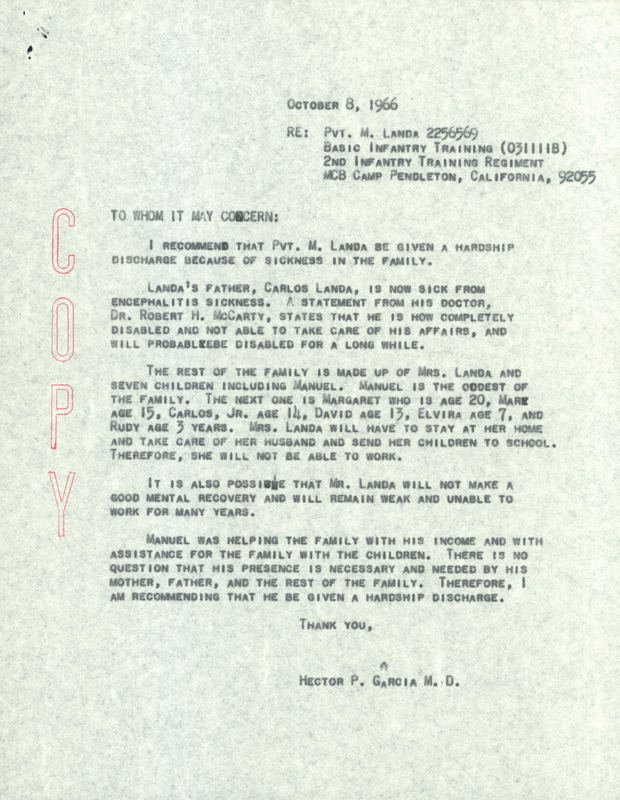
Letter from Dr. Hector P. Garcia to the United States Army

Letter from Mr. and Mrs. Eluterio V. Barrera to Dr. Hector P. Garcia
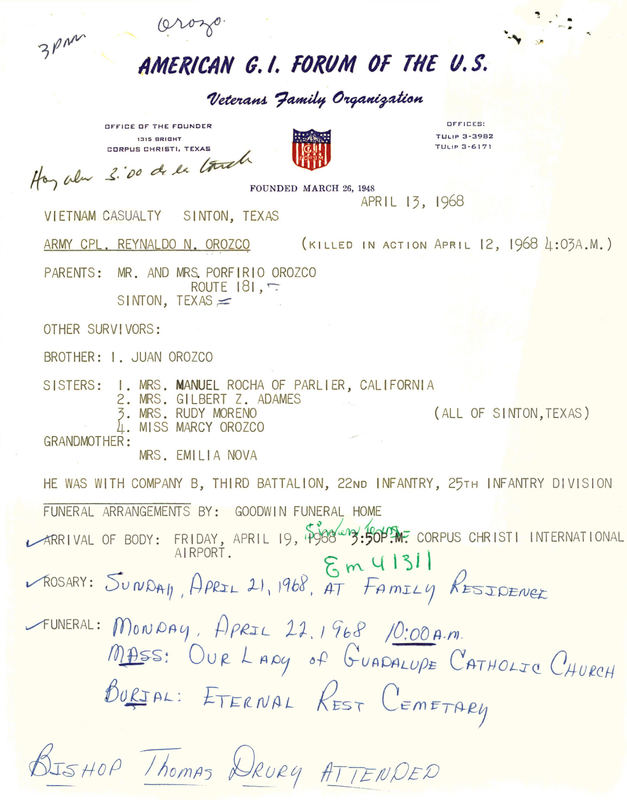
Funeral Arrangements for Corporal Reynaldo N. Orozco, American GI Forum
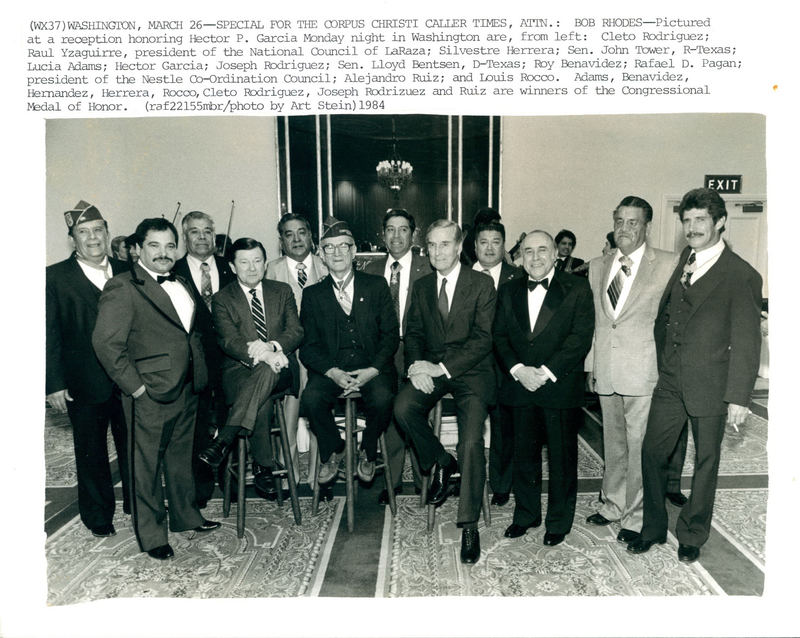
Dr. Hector P. Garcia with Medal of Honor Recipients
Fighting for Felix Longoria
In 1949 the director of a funeral home in Three Rivers, Texas, refused to host a service for Private Felix Longoria because of his ethnicity. Longoria’s widow, Beatrice, turned to Dr. Garcia for help. The AGIF launched a massive protest that resulted in a formal burial service for Private Longoria at Arlington National Cemetery. The experience transformed the AGIF into powerful voice for Mexican American civil rights.
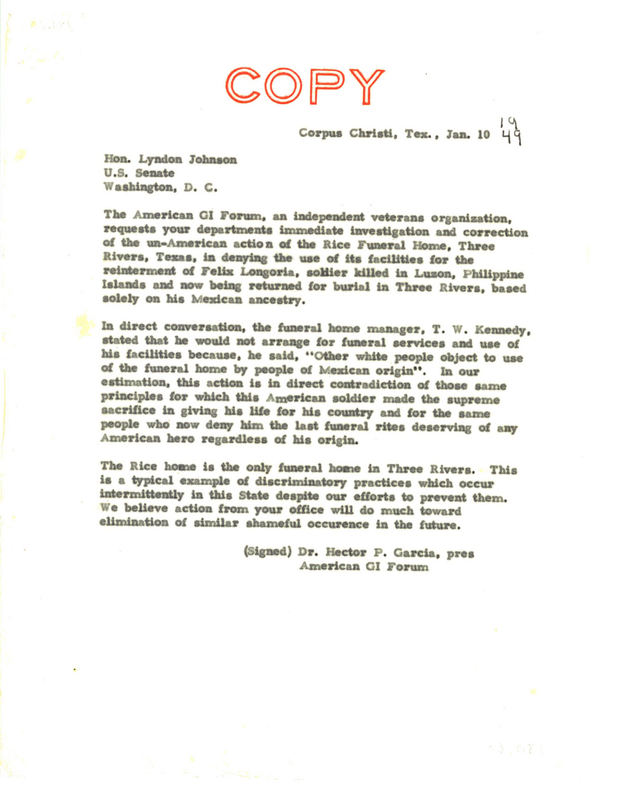
Letter from Dr. Hector P. Garcia to Senator Lyndon B. Johnson
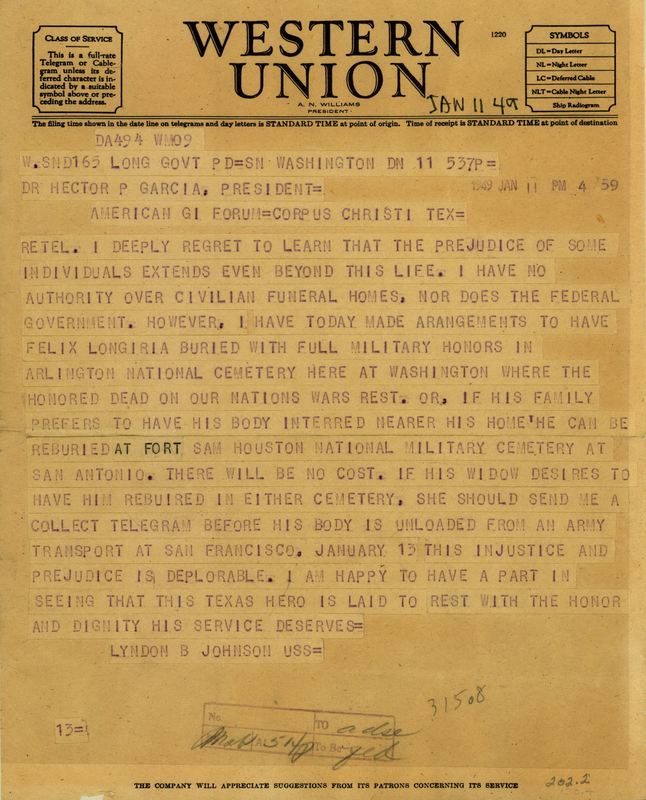
Telegram from Senator Lyndon B. Johnson to Dr. Hector P. Garcia

Gran Junta de Protesta [Large Protest Meeting] Flyer, American GI Forum
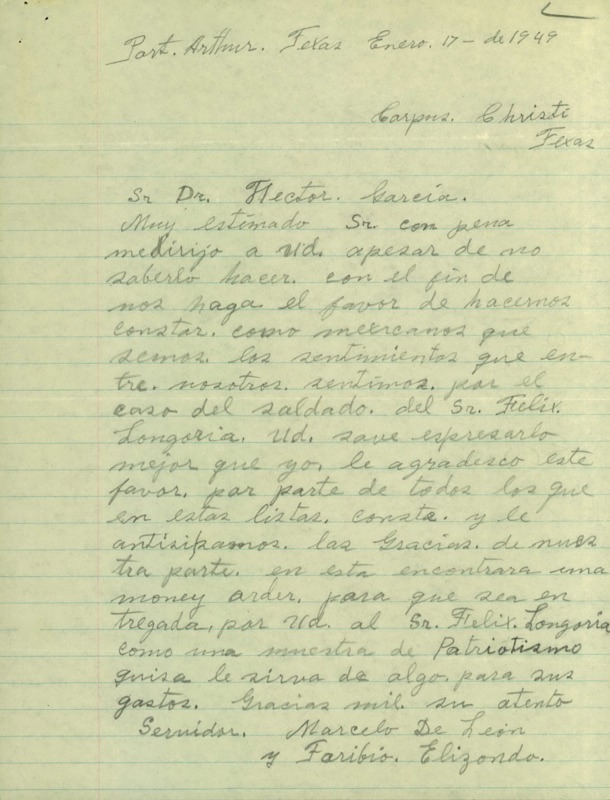
Letter from Marcelo De Leon and Faribio Elizondo to Dr. Hector P. Garcia
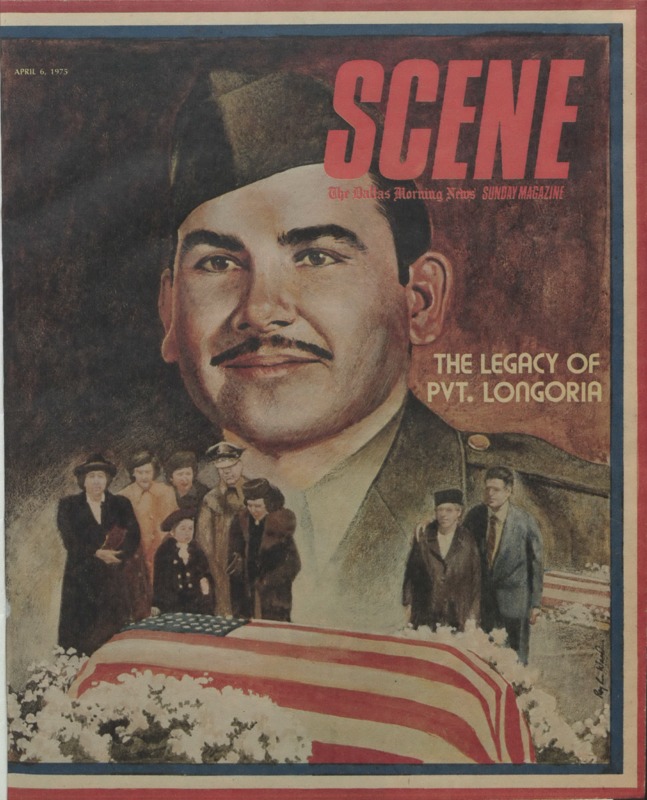
The Legacy of Private Longoria
